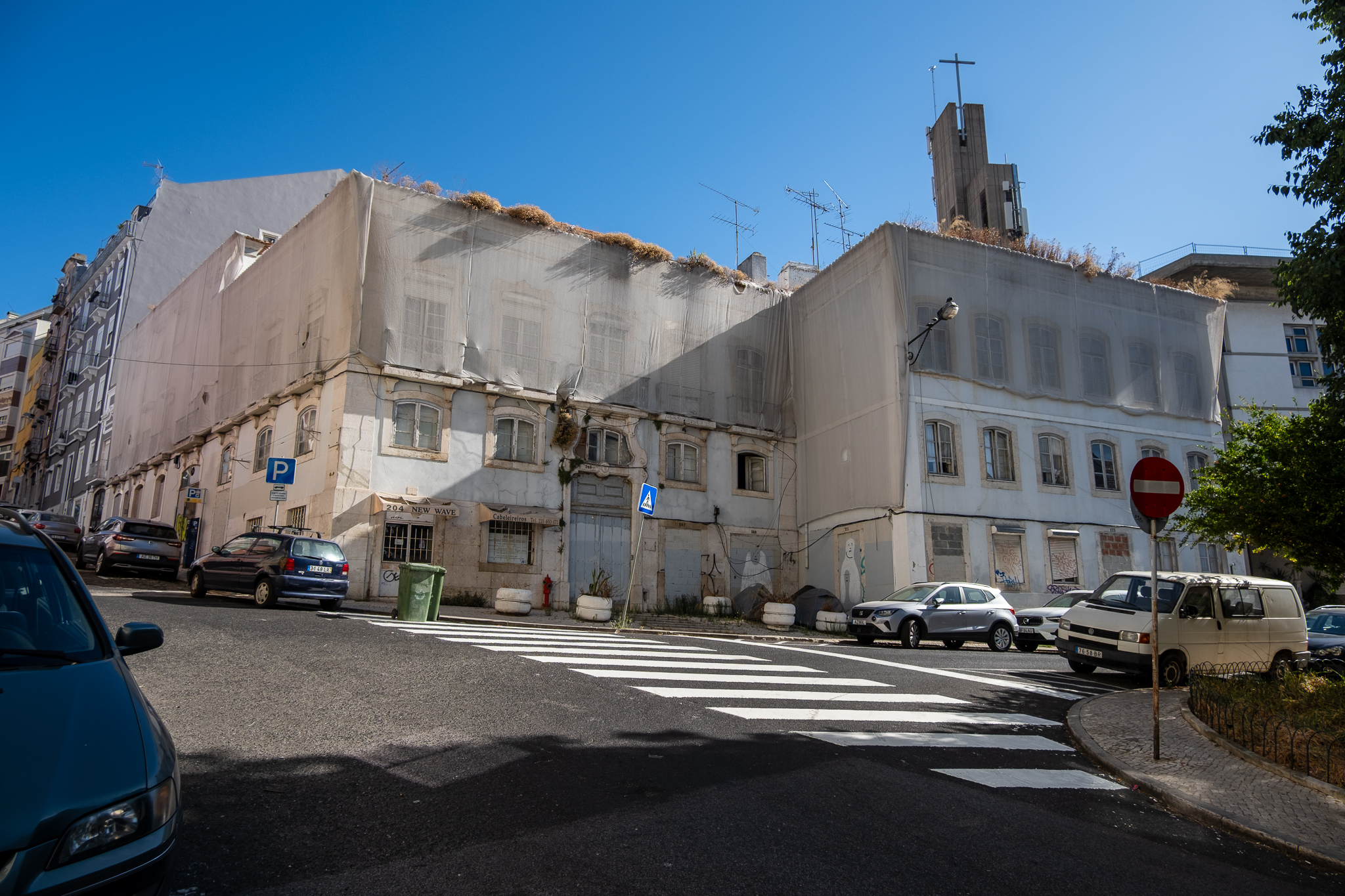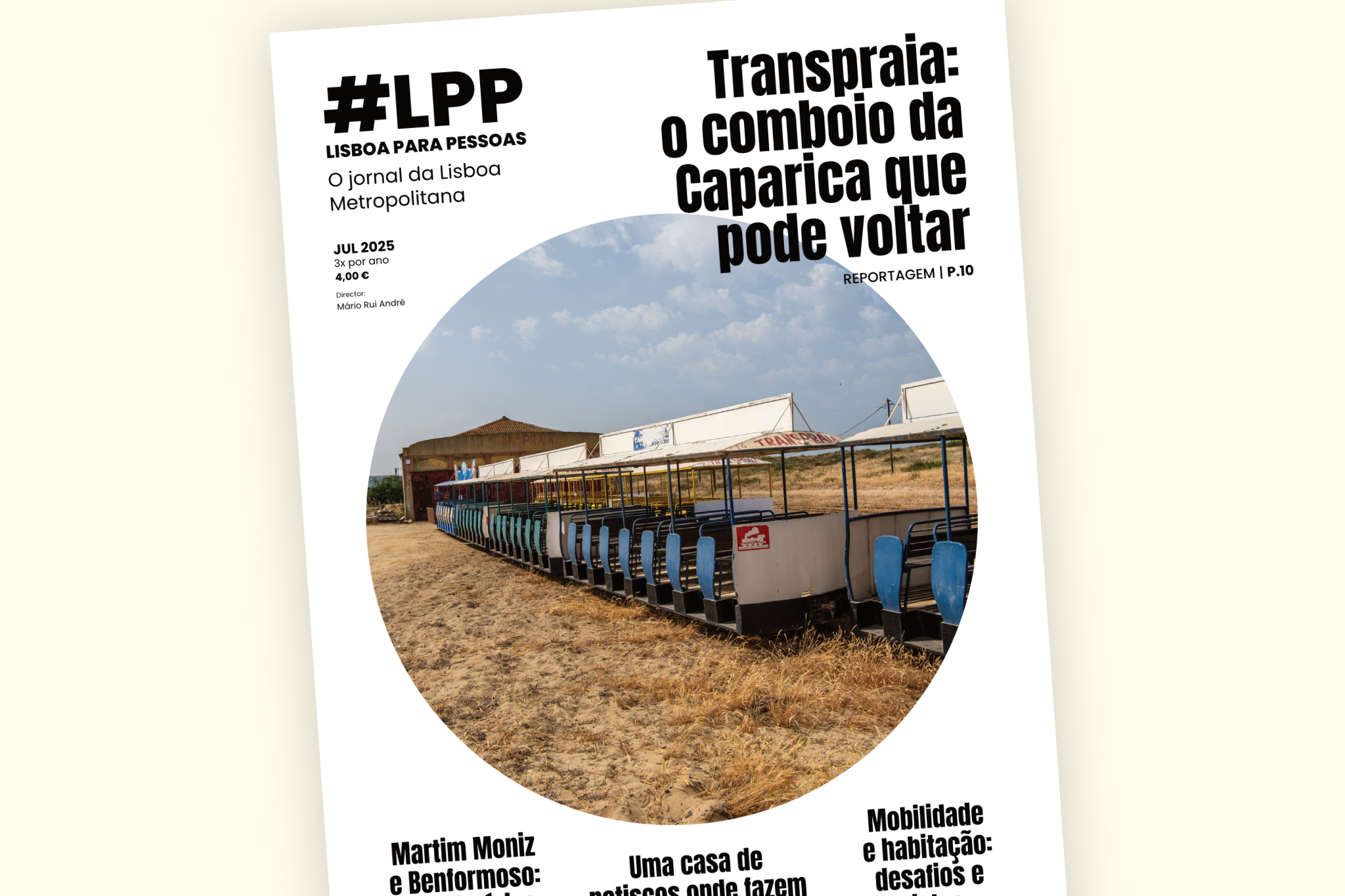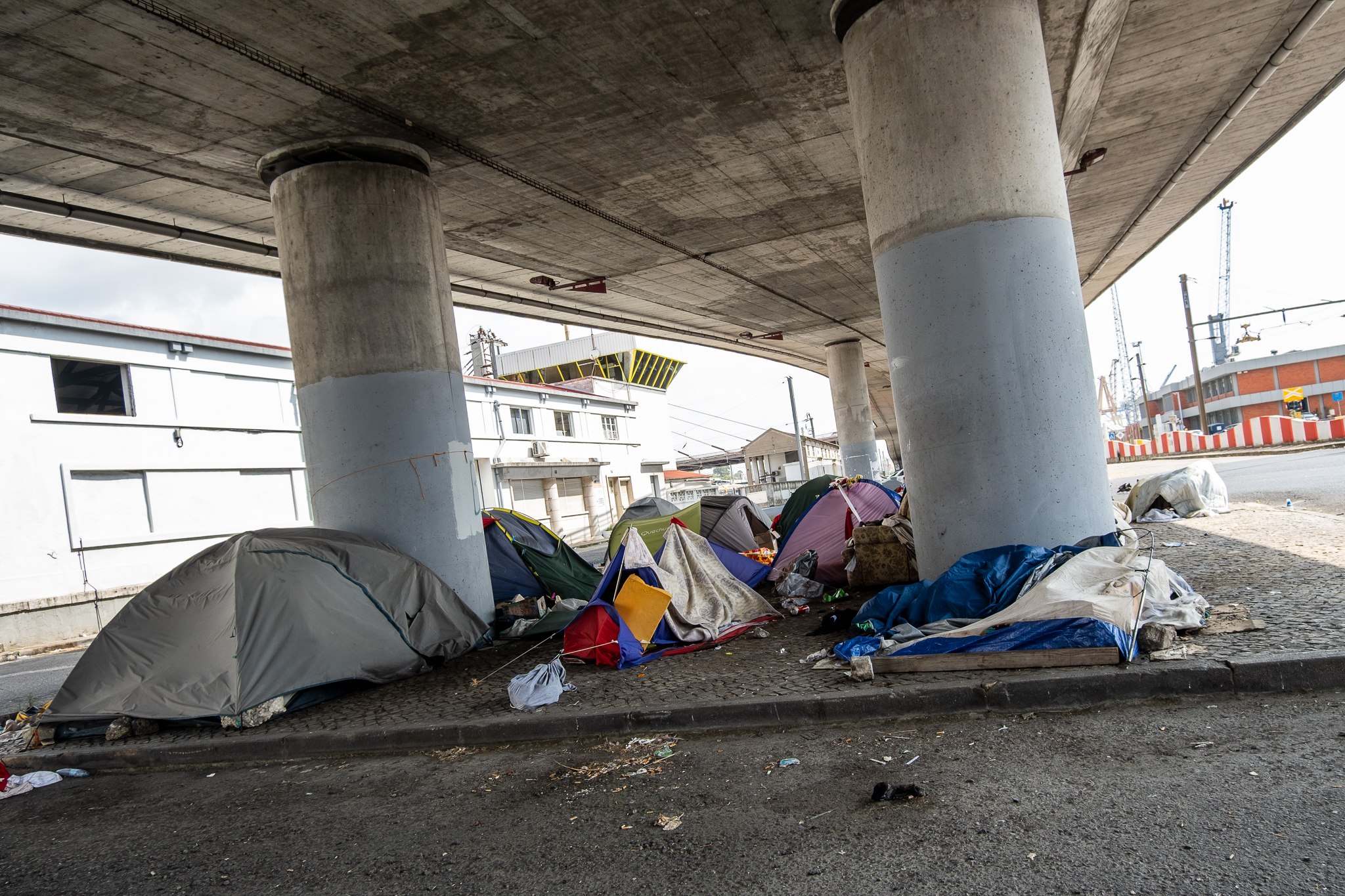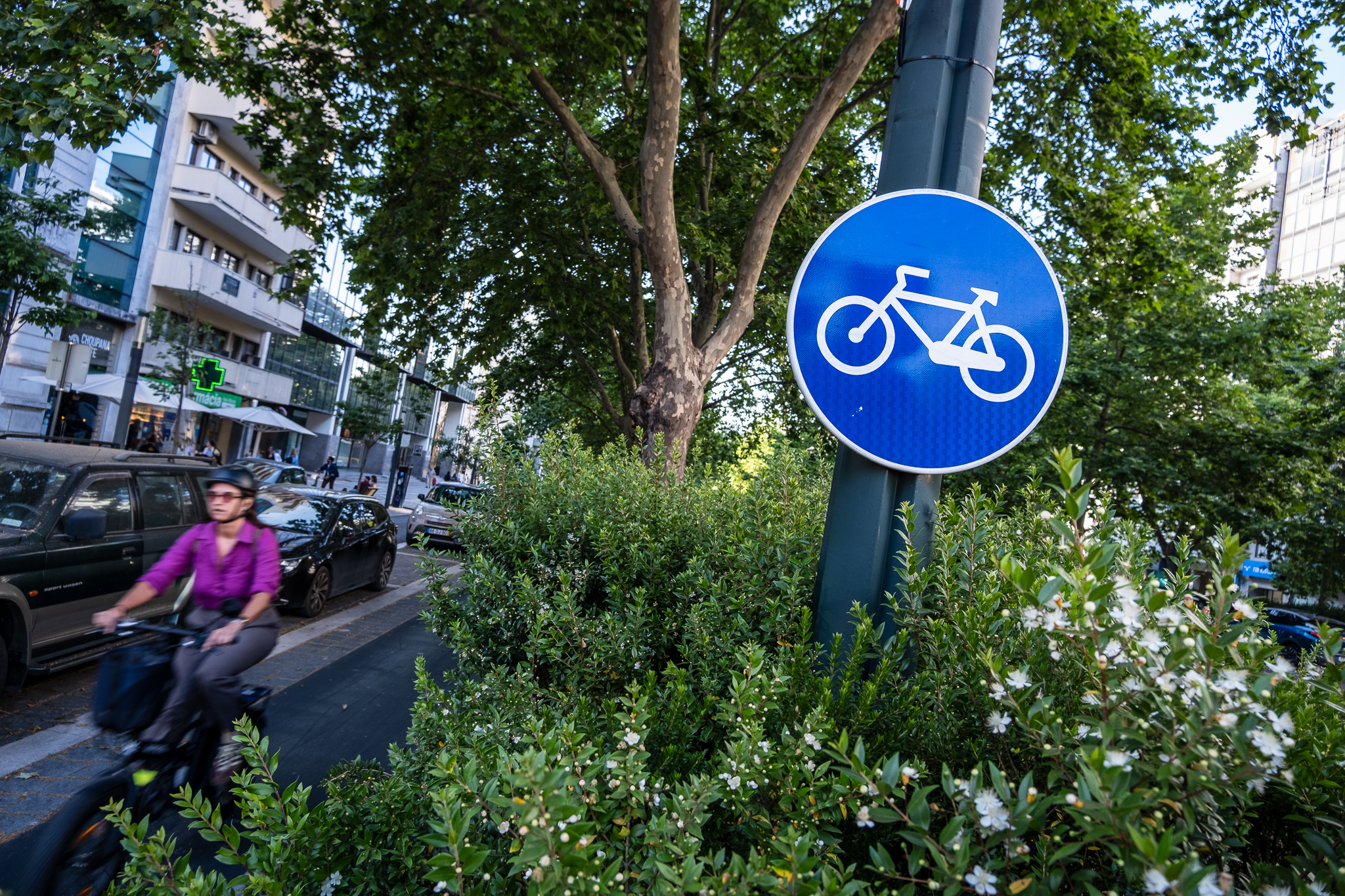From September 9 to 17, Jardim da Parada will grow, with no cars around it. The aim is to intensively test a "superblock" in this area of the Campo de Ourique parish in Lisbon. The president of the Junta is already talking about a winning idea and wants to go further: he wants to turn the whole neighborhood into a 30 zone, with calm, safe and tree-lined streets.

For an entire week and the two weekends that follow, the Jardim da Parada will not have any cars parked or driving around it. The Campo de Ourique Parish Council, with the support of the Lisbon City Council, is preparing to test a "superblock" in Jardim da Parada with the implementation of a new road scheme.
The idea is extend the Jardim da Parada to the façades of the buildings, increasing the public space for people to enjoy from 5.4 to 9.7 square meters - without doing any work, just banning car traffic and parking. During the nine days, the streets and around 90 parking spaces The area around the garden will be filled with terraces from local establishments and a range of family activities; there will be inflatables and children's games, workshops on composting and more, an area for trying out sports, giant chess and other board games, concerts, a section dedicated to animal welfare and a traffic and bicycle school.
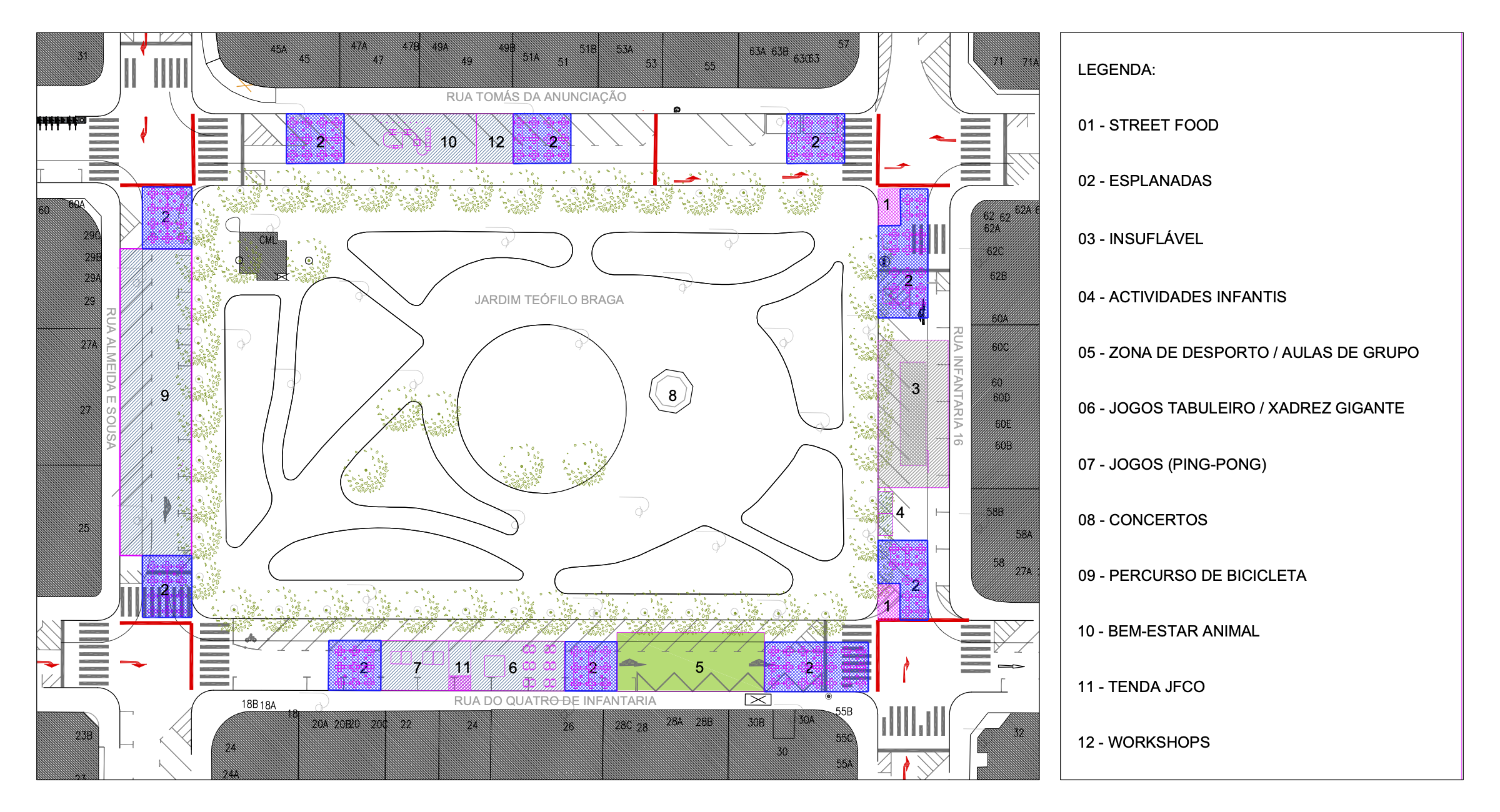
The "superblock" in Jardim da Parada is going to work from September 9 to 17, over nine days, including weekdays and two weekends. Pedro Costa, president of the Campo de Ourique council, explained to LPP that the timing was chosen so as not to coincide with the reopening of schools, "because it wasn't worth putting that burden [the event] on parents, turning traffic upside down in the first week of school".
The Junta de Freguesia wants, together with the population, to test how a "superblock" in the neighborhood and particularly in Parada could work before eventually implementing this urban model definitively. If this were to happen, it would only be after the Lisbon Metro expansion works, which are scheduled to be completed by the end of 2026. The nine days in September will be the ultimate test of the concept, after having already been tried out in June and July. "We did the first tests. First, in June, we only cut off car traffic around the Garden to see how it would work and draw the first conclusions. Then, in July, we extended the terraces and the public space, removing the cars, which were not yet active. In other words, we called people to come and pick them up. We didn't think there was enough money to tow them all away, but we did tow some of them away."
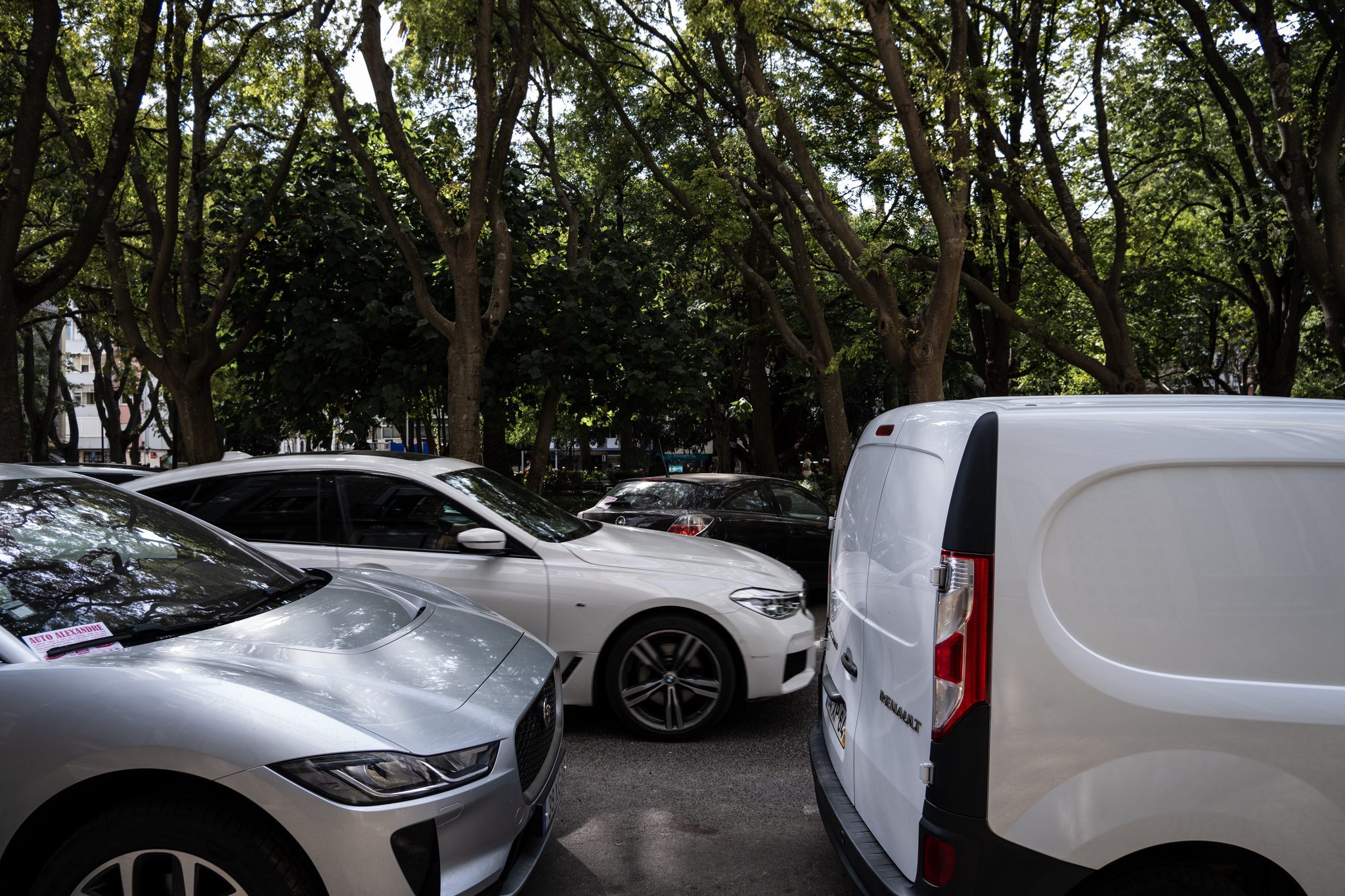
Pedro Costa's assessment of the one-off closures in June and July is positive: "I'm very honest. From the first observations we've made and the criticism we've had, the superblock is an idea that has already won. Now we need to work with the people who live in those buildings, correct specific problems and fine-tune details"This is the case of a garage that exists in the area where traffic is to be restricted or the situation of the cab rank in Jardim. "Now, in September, during the nine days, we're going to close the surrounding area of Jardim da Parada to traffic again and give people what the garden can be if we extend it to the façades of the buildings. We'll have stores expanding their terraces, cultural events, inflatables for children, a whole range of games and activities..."explains the President of the Junta.
An idea worked on by citizens
The completion of this "superblock" in Campo de Ourique is taking place in an atmosphere of consensus. The Junta de Freguesia likes the idea, the Câmara de Lisboa needs to follow up on it. Citizens' Council proposals (and the "superquarteirões" were one of the ideas that came out of the first edition), there is a Lisbon Metro project taking place in the area, which inevitably affects the public space, and in the middle of last year a group of citizens with a concrete proposal for a "superblock" in the Campo de Ourique square. "The first time we heard about the superblock was in an intervention made by Jorge Farelo in a public discussion"recognizes Pedro Costa.

Jorge Farelo is an architect, just like Rita Castel' Branco. Together with other citizens of the neighborhood and also with Mário Alvespresident of the Estrada Viva association, Sandra Nascimento, president of APSI - Associação para a Promoção da Segurança Infantil (Association for the Promotion of Child Safety), are proposing a "superblock" like those created in Barcelona. They launched a petitionThey created an illustration of the concept and developed information materials, which they have been distributing to the local population. At the same time, they are working with the Parish Council.
His idea is more ambitious than the one that will now be implemented over nine days in September. "It's taking nine blocks and removing the through traffic within the core of those nine blocks. Hence the name superblock. Instead of having traffic on all the streets, there is this superblock, made up of nine blocks, within which there is local access - people can go and park - but there is no through traffic from A to B."explained Rita Castel'Branco in an interview with the newspaper Message from Lisbon. In essence, the citizens' group wants to bring to Campo de Ourique the transformation they have seen happening in Barcelona, where large areas have been established that are predominantly pedestrianized, where the car will only be needed if at all - this includes, of course, loading and unloading and also access to garages.
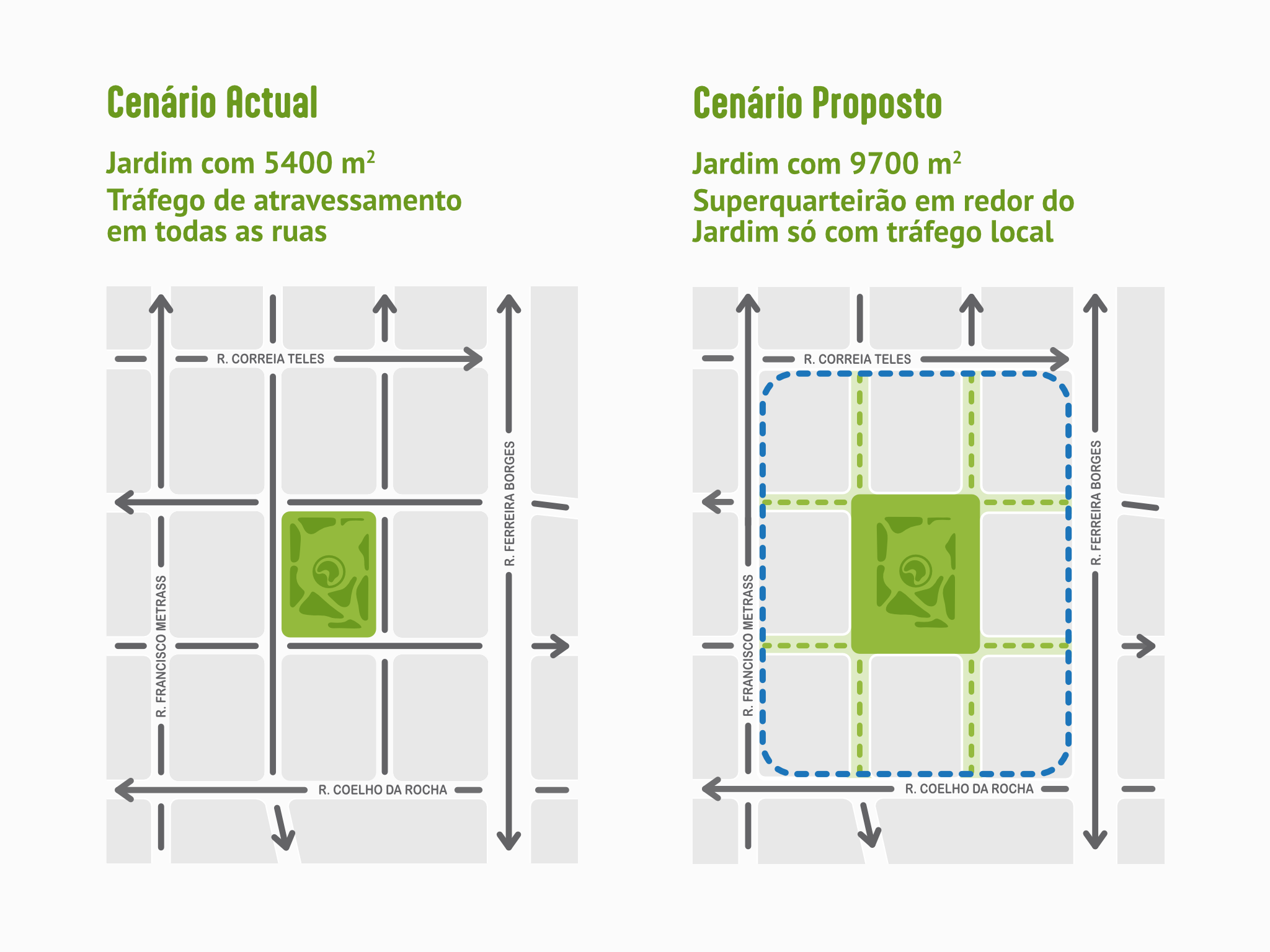
In the scenario proposed by Jorge, Rita, Mário and Sandra, the Jardim da Parada would also be extended from façade to façade with road traffic only on the corners; this traffic, as mentioned, would be very small and circumstantial, as all the streets that would enter the garden would have a pedestrian design and green spaces. On the other hand, the need for parking could be covered by the new parking lot planned for the Patio das Sedas with 600 seatsof the 80-seat silo planned for the Travessa Bahutonear the Prazeres Cemetery, or even a agreement with Centro Comercial das Amoreiras for the provision of overnight parking. In other words, the surface parking lot could be transferred to a parking lot in order to give other uses to this surface public space. Just like Barcelona did.
From Barcelona to Lisbon
In Barcelona's "superblocks", the noise of cars is not heard, replaced by the sound of people talking, children playing or birds. The air is fresher due to the greater green cover and also less polluted - in one of the Catalan capital's superblocks, verified a decrease in the concentration of nitrogen dioxide by 25% and particulate pollutants by 17%. Cars can enter if they need to, but they drive slowly and respect the space as a coexistence zone, where priority is given to pedestrians and the speed limit is 20 km/h. There are spaces for loading and unloading and other areas for quick stops, either to unload a larger volume or to pick up a passenger with limited mobility. However, since walking is the priority, people end up going about their lives on foot, or even by bicycle, including going to neighborhood supermarkets to meet their needs.
In Barcelona, the "superblocks" are possible due to the organization of the city into squares, where it is easy to establish a road hierarchy made up of main arteries, for crossing, and a network of inner streets, with reduced speed, intended for local traffic. The Spanish city calls these streets "green axes". Also Campo de Ourique, like other parishes in LisbonIn this way, traffic can be reorganized, block by block, defining crossroads (such as Rua Ferreira Borges) and leaving the interior of the neighborhood for pedestrian traffic.
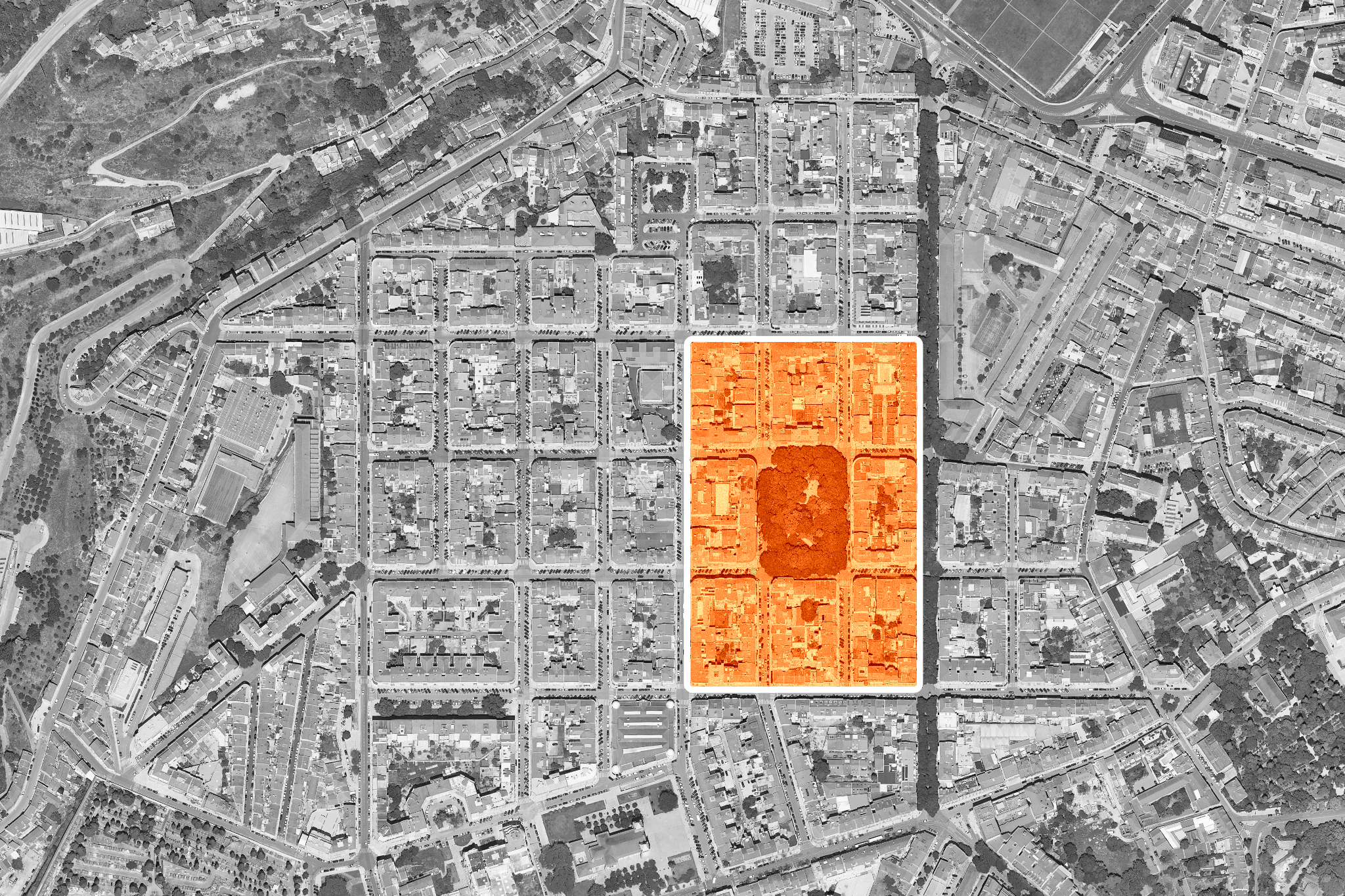
"The arrival of the Metro could never be a moment to destroy the Jardim da Parada and, in addition to the need to defend the garden, the work could not be wasted as an opportunity to collectively think and discuss how to enhance this central space of the parish.", assures the President of the Campo de Ourique Council.
Giving people space in the neighborhood
Pedro Costa is not committed to establishing a "superblock" like the one the citizens' group is proposing, i.e. transforming the eight blocks around Jardim da Parada and their respective streets - a he Campo de Ourique municipality is only looking at closing the area around the garden to traffic, as will be the case for the next nine days.. But the President of the Campo de Ourique Council has the ambition to transform the entire square of the neighborhood, making it a great low-speed zone (maximum 30 km/h), where it is comfortable to walk because there are trees providing shade and freshness, where the public space is accessible to all people with accessible and safe crosswalks, and where there is no through traffic.
Specifically, the Campo de Ourique council wants:
- 30 km/h: "The circulation model we have for the whole neighborhood involves expanding the current Zones 30. There is no reason for any street in Campo de Ourique to be more than 30 km away"says Pedro Costa, who is committed not only to changing speed limits, but also to "small adjustments that can be made without too much difficulty, such as parking in a gymkhana, to ensure that the 30 km/h limit is met".
- crossing traffic: "We're going to have to start removing some journeys and changing traffic directions to ensure that Campo de Ourique doesn't have through traffic"says Pedro Costa. The Campo de Ourique council is working on a plan for the whole neighborhood, and the idea is to implement it. "This is the kind of work that we should be doing, because there are unexpected problems that arise when we change the direction of one street or another. Even the traffic flow simulation models still have a lot of flaws." For the mayor, reversing directions block by block and also changing where you can turn will not only remove through traffic, but also calm speeds. "Not allowing people to go straight from end to end also solves this problem. But there are some end-to-end crossings that we should keep, not least because for safety reasons there need to be at least two emergency channels"he adds. "This is a plan we're making for the whole neighborhood. It's still a very young project and needs input from many people, from the Municipal Mobility Department, the fire department, etc."

- 100% of free car rides: critical of abusive parking and poor enforcement by the authorities, Pedro Costa admits "a solution that is not preferred but is effective: the placement of bollards to ensure that cars comply with parking limits". "We can't be constantly dependent on the police monitoring or not monitoring"indicates the Chairman of the Board;
- safe and accessible walkways: "We want to ensure that all crosswalks are safe for everyone who crosses them"Pedro explains. "As well as the lowering, which allows baby carriages, wheelchairs and those who have more difficulty overcoming the height of the kerb, we're also going to put in equipment for the blind, such as tactile guides, at all the crossings." The crosswalk lowering and accessibility plan will be accompanied by interventions on street corners, where the pedestrian space will be extended to reduce the width of the crossing, increase the visibility of pedestrians by motorists and prevent the abusive parking that often takes place on these corners, on top of the crosswalks.
- a tree on every corner: by 2025, Campo de Ourique wants to plant 200 trees. "That's what's in the preliminary study we've already sent to the council"which will fund part of this project. "Metro pays us for 50 trees"as compensation for the works in Jardim da Parada. "The aim is to have a tree on every corner" but also to create green pedestrian corridors linking the parish's green spaces, for example between Afonso do Paço Square, at one end of the neighborhood's network, and Santo Condestável Church. "We can no longer assume that people will walk around the Campo de Ourique neighborhood without giving them thermal comfort. We can only achieve this by installing trees. You only have to walk along Ferreira Borges to see the difference compared to walking along another parallel street in the neighborhood, even though Ferreira Borges is the street in the neighborhood with the most trees."

The plans of the Campo de Ourique parish council are ambitious, given what we are hearing from other parishes in the city. From September 9 to 17, a "superblock" will be tested in Jardim da Parada, extending it up to the façades of the buildings - an idea that is gathering political consensus as well as public opinion, and which also came from a citizens' proposal. It is likely that the new model will be implemented definitively when the Metro arrives in the parish, at the same time as the whole neighborhood is transformed with calmer, greener, fresher and safer streets.
In Praça da Alegria, in the parish of Santo António, too a "superquarter" is being promoted, albeit in different ways. Here, the initiative simply aims to close the area around the square to cars on the last Sunday of each month, between April and June. As LPP saw in the first edition, which took place on April 30, the initiative was poorly attended, also because it was poorly communicated (as it has been for several months, in fact); we also saw people occupying the space they normally occupy in the garden. For the area around Praça da Alegria, there is no known plan to change the direction of traffic to remove all the through traffic between Avenida da Liberdade and Príncipe Real from the square, in order to establish a more local and pedestrianized circulation in the area.

